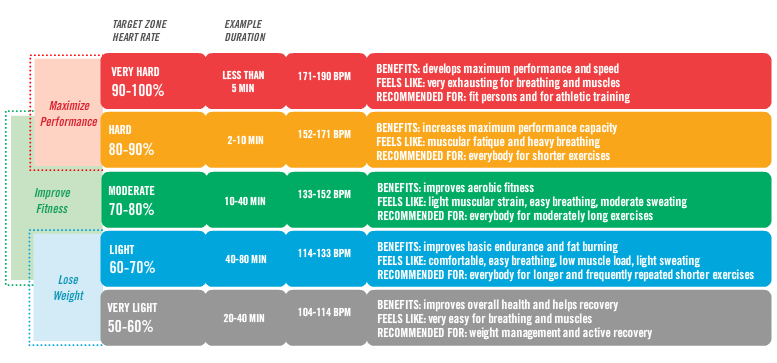If you’ve stepped foot in a gym sometime with in the last thirty years you’ve seen it. Hung by the cardio equipment; framed behind shiny glass, proudly guiding you in bold primary colors to your target heart rate zone. That’s right, I’m talking about the well known Target Heart Zone poster and that baby is proud for a reason. Using your Maximum Heart Rate to verify you’re exercising with in your target zone is imperative to improving cardiovascular fitness and achieving weight loss goals.
This bright and shiny poster makes success so easy, so accessible; we’re all just a simple mathematical formula (220-your age) away from instant exercise mastery!
There’s only one problem. It’s just plain wrong. Yup, someone spent all that time putting a straight up fallacy behind glass.
The age-adjusted maximum heart rate formula (also known as the “age regression formula“) was developed at a time when more accurate exercise prescription or testing was scarce or unavailable. This unscientific and unproven formula was developed in the early 70’s by scientists who never intended to create a formula that was representative of the entire exercising population. In fact, their studies were based on only male subjects, all under the age of 55 and there exists zero scientific evidence to support the 220-your age formula.
The real truth is (brace yourself) your Maximum Heart Rate is a genetic marker. It is as unique to you as eye or hair color. It has more to do with heart size than age and if you stay moderately active as you age it shouldn’t drop a single point.
So, what are we to do? Fitness fanatics and athletes are desperate for numbers to prove they’re hitting the right intensity in their training and beginner exercisers rely on these numbers to help guide them in the early stages of weight loss and fitness. Don’t fret, friends, the solution is still a simple one.
Sub-maximum testing protocols, or “sub-max tests,” are a straightforward method of estimating maximum heart rate, based on a physiological response to a safe level of exercise stress.1 That means you are only one workout away from knowing your estimated maximum heart rate. In about an hour, using a collection of fitness tests that combine self perceived exertion and pacing indicators we can establish our estimated maximum heart rate and your unique training zones putting you on the path to complete exercise mastery!

Jessica Wurtzebach is a Castle Hill certified personal trainer and cycling instructor with over nine years of experience in the business. Her accomplishments include being a college phenom at Trinity University, San Antonio in the cut throat world of Women’s Division III basketball. She is a also a three time Ironman finisher, avid cyclist, aspiring ultra marathoner, full time bike commuter, certified raw foods chef and all around rad girl. Read her training bio…

Interesting perspective and an example of medical bias without substantive evidence. Would like to see some data on both sides.
Mostly, but not completely correct. I’m 65 and a life-long competitive swimmer. At age 65, the formula says I should be able to get a max HR of 155. I regularly get 165-170 going 90% in workouts, and can maintain an average HR of 140 over and hour. But when I was in HS and college, I could get over 200, easy. I remember – we had sets in which we were instructed to keep HR at 200 or over. So, my max HR is down around 30 pts. over 45 years. But, that’s competing as a masters swimmer since… Read more »
max heart rate “stay moderately active as you age it shouldn’t drop a single point.”
Young athletes easily get 200 bpm
Show me an 80 year old athlete with 200 bpm.
You may have a point but it’s lost when you BS us nonsense. No facts, no evidence, BS detector alert 🙂